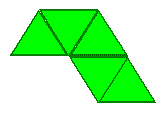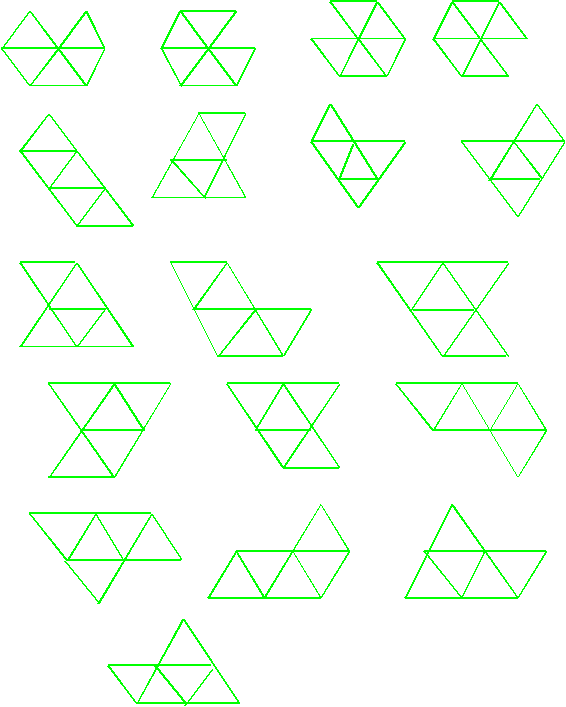Tri-five
Problem
Find all the DIFFERENT shapes that can be made by joining five equilateral triangles edge to edge.
Here's an example:

Getting Started
How will you know you've got all the arrangements?
You may find it useful to record your arrangements on dotty paper.
Student Solutions
Finding the best solution for this problem depended on thinking very carefully about what was meant by DIFFERENT ways of arranging the five triangles. For example: Christine (Malborough School) explained:
There is only one shape from the hexagon group because when this shape is rotated it looks like different shapes but it is just one basic shape.
As Sophie said:
Leyla (Private IRMAK Primary School, Istanbul, Turkey) sent in drawings of the four ways:

Merve (Private IRMAK Primary School, Istanbul, Turkey) agreed with this set of four shapes too.
Caroline and Rebecca (The Mount School, York) also realised that some shapes they found were really the same as others if you turned them around or flipped them over:
We found six different ones, but two of these are reflections in a way, so maybe it's only four.Kirstine (Tattingstone School) also saw how to group some 'variations' of the same shape together. However, if you decided to think about each position of the shape as being different, then there would be many shapes in your solution.
Ece (Private Irmak Primary School) found $18$ shapes. Do think there are any more?
Christopher (Tattingstone School) found two more variations of the straight line. Well done to everyone else who sent in some shapes.

Teachers' Resources
Why do this problem?
Possible approach
Key questions
Possible extension
What about getting pupils to ask "I wonder what would happen if we ...?"
